TOP 5 sightseeings within walking distance of Teatralny hotel.
1. The Zaporizhzhya Regional Academic Ukrainian Musical Drama Theater im.Mahara
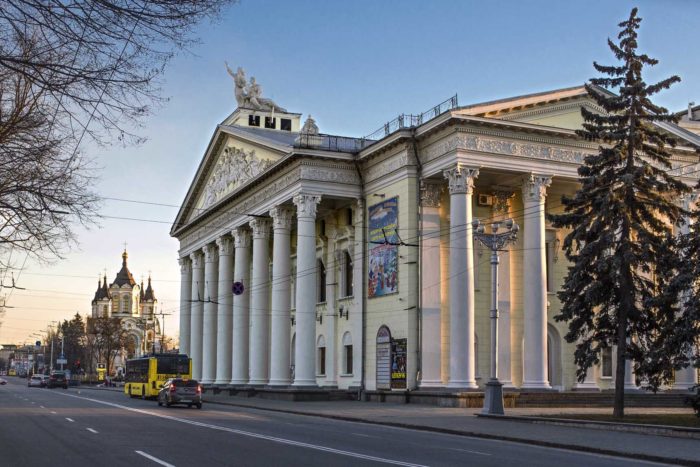
Photo by Sergey Lavrov
Today the Zaporizhzhia Academic Regional Ukrainian Musical and Drama Theater named after Magar is a combination of the architectural beauty of the building and the diversity of the repertoire.
The theater is named after the artistic director of the theater, People’s Artist of the USSR Vladimir Magar. The premises of the current theater were built in 1953. In 2004, the theater was awarded the title of academic. The repertoire of the theater includes Ukrainian classical, world and modern drama, operettas and musicals, performances of a heroic-romantic orientation, comedies, musical and plastic performances and fairy tales for children. The theater operates: a theater salon and a small stage. An international theater center Danapris and an open-air theater were set up at the theater, and their performances are held on Khortytsia Island, in the Historical and Cultural Complex Zaporizhzhia Sich, National Reserve Khortytsia.
2. Zaporizhzhia regional local history museum
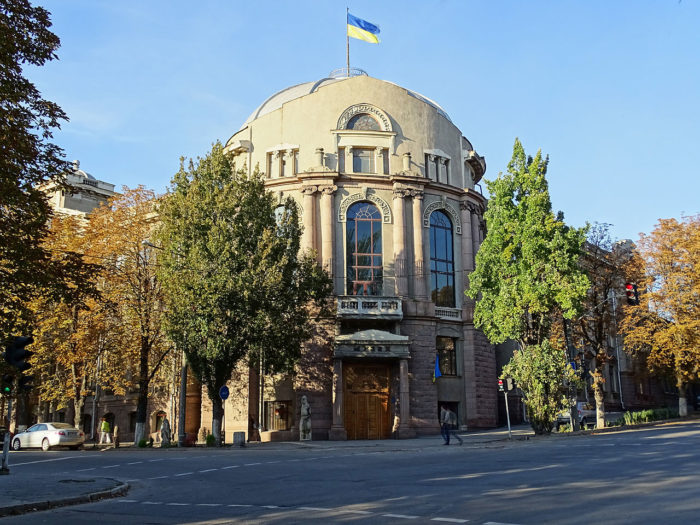
Photo by Evgeniy Usov
Today, the museum’s collection comprises more than 110,000 thousand museum objects, of which more than a hundred are related to the history of the Cossacks. Today’s museum exposition is located in 22 halls of the departments of nature, archeology and history.
Among them are relics such as kleinods, cold steel and firearms, ship cannons and anchors, household items of the Cossacks, coins, documents of the 18th century. The archaeological collection in Zaporizhzhia is one of the largest among regional museums in Ukraine. Of particular interest are the unique monuments of the Bronze Age and Scythian time, the periods of the Chernyakhov culture and the Middle Ages. A large collection of the times of the liberation struggle, and the peasant movement under the leadership of Nestor Makhno, the construction of the DniproHES, the Second World War and the post-war restoration of the industrial complex of Zaporizhzhia. The multinational culture of the Zaporizhzhia region from its settlement in the XVIII-XIX centuries presented in the rooms Settlement of the Zaporizhzhia Territory. The halls of the nature department attract numerous exhibits of flora and fauna of the steppe, forest and the Sea of Azov.
3. Profitable House of Leshchinskiy
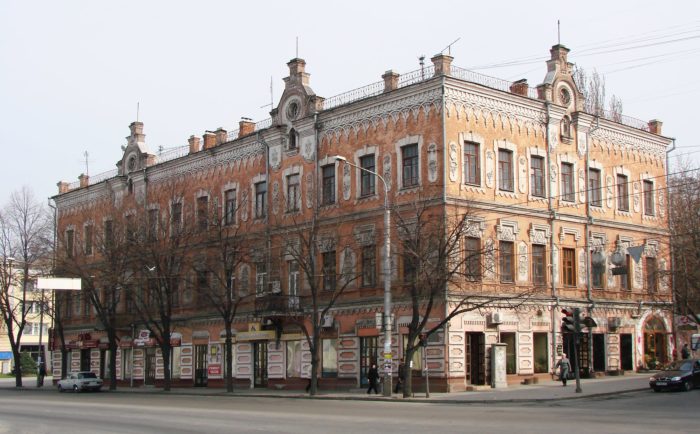
Built in 1901 for the hereditary merchant of the 1st guild Leshchinsky and is the first three-story profitable building in the city of Oleksandrivsk.
In 1905, during the Jewish pogroms, the house was completely bedroom, but restored after the initial project after 3 years.
The landlord Leshchinsky rented it out to private individuals for shops and public organizations. According to old photographs, the street facades along the streets were decorated with columned clocks that have not been preserved until now, the balconies of the main facade looked like bay windows, the extreme side opening on the ground floor of the facade on Troitska street functioned as a through passage from the street to the courtyard (today it is laid )
In 1914-1915, the artist, singer and composites Leonid Utesov rented housing in the house of Leshchinsky, at the same time he met his future wife.
In 1917-1918, the First Alexander Rada of workers and soldiers’ deputies was located in the house.
In this house lived Nestor Makhno, a political and military leader, commander of the Revolutionary Insurgent Army of Ukraine, leader of the rural uprising of 1918-1921, a well-known anarchist and guerrilla warfare tactician.
In 1919, the Alexander Worker University worked in the house, and in 1920 – the Palace of Labor.
With the establishment of Soviet power, the house became residential and today there are residential premises in the house, and the first floor is occupied by commercial facilities.
The house is an example of an early large-scale profitable development of the historical part of the city.
4. Holy Intercession Bishops’ Cathedral
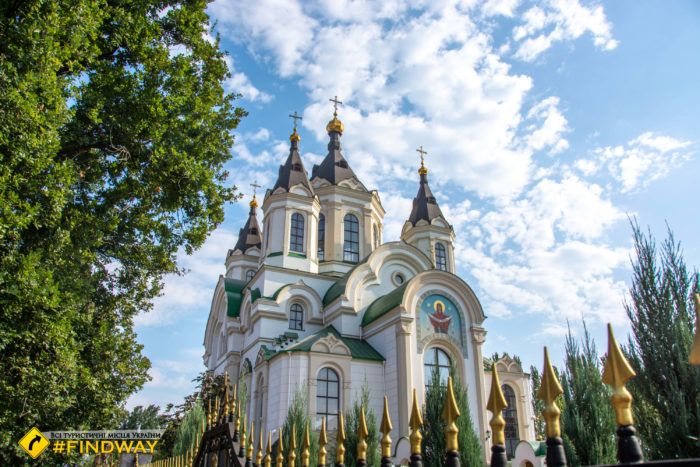
The Holy Intercession Bishops’ Cathedral is a monument of religious architecture and urban planning of local importance.
The first church, which was located on the site of today’s Holy Intercession Bishops’ Cathedral, was built in 1778 mainly from wood.
In 1886, on the site of the former Intercession Church, the Holy Intercession Cathedral was founded, which was destroyed in the 30s of the 20th century.
In 1993, it was decided to recreate the Holy Intercession Bishops’ Cathedral in its original form. The construction of the temple lasted 14 years.
Architect Dmytro Romanov found photographs of the cathedral in the Synodal Archive of St. Petersburg, which stood on the site of the reconstruction of the church until the beginning of the October 1917 revolution. Designers studied in detail the architectural features of the church on Soborny Square and were able to develop drawings for the construction of a new church.
The new church was an exact copy of the main church of Oleksandrivsk, which was destroyed at the beginning of the 20th century.
Today the temple is one of the most beautiful cathedrals in the country 53 meters high with a vivid image of the Blessed Virgin Mary and a rare iconostasis in the Ukrainian Baroque style.
The iconostasis was probably created in 1730. For over 200 years he was in the church of Archangel Michael in one of the rural parishes of Podillia. It is possible that before the ancient iconostasis, the Cossacks prayed for the strengthening of the Orthodox faith. In 1938, when the church was finally destroyed, the iconostasis was in a private collection and prepared to be exported abroad. But later it was transferred to the Zaporizhzhia diocese of the Ukrainian Orthodox Church.
5. The Central Park of Culture and Rest “Oak Grove”
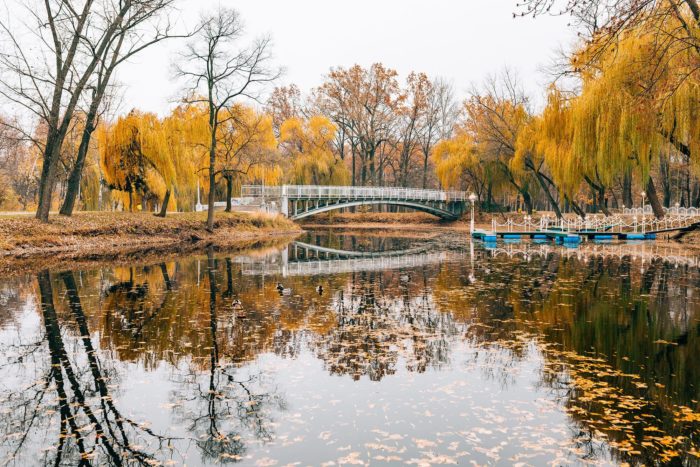
This recreation park is located in the Oleksandrivskyi district, Zaporizhzhia. It was founded on May 1, 1959. Its total area is more than 57 hectares, of which 5 are the nature reserve fund. In addition to oaks, in the forest you can see a variety of different flora.
One of the most famous trees here was the Makhno Oak, which was located closer to the side of the city. The tree withered and was eliminated in the 1970s.
Now this place is quite popular among residents and guests of Zaporizhzhia. There is an artificial reservoir along which two bridges are built. There are many interesting places for leisure on the territory: playgrounds, an amusement park, a cafe, a restaurant, a place for renting catamaran boats. This place is quite popular for the celebration of memorable dates and themed photo shoots. There are also sports competitions, master classes, concerts and the like.
Interesting: in the 1950s, the famous feature film Spring on Zarechnaya Street was filmed in Dubovyi Gai, which still occupies a special place in the cinema.
